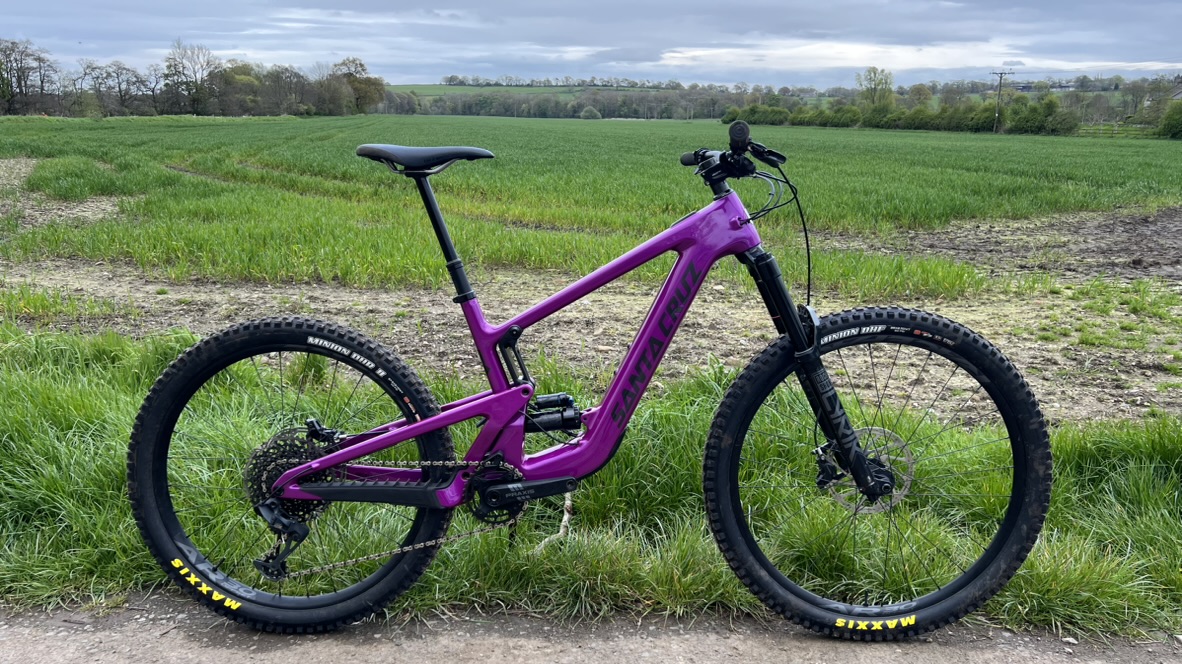
The recipe for Santa Cruz’s Heckler SL e–MTB is pretty simple. Take the excellent suspension and handling performance of the Bronson mid-travel MX play bike. Then power it up with a Ride 60 motor and battery package from Pon partner brand Fazua. Now head for the hills and trails and have a laugh for longer than you could on a human-powered bike. And that’s pretty much the dreamy situation the Heckler sets up, but it’s not without its potential issues in terms of motor reliability.
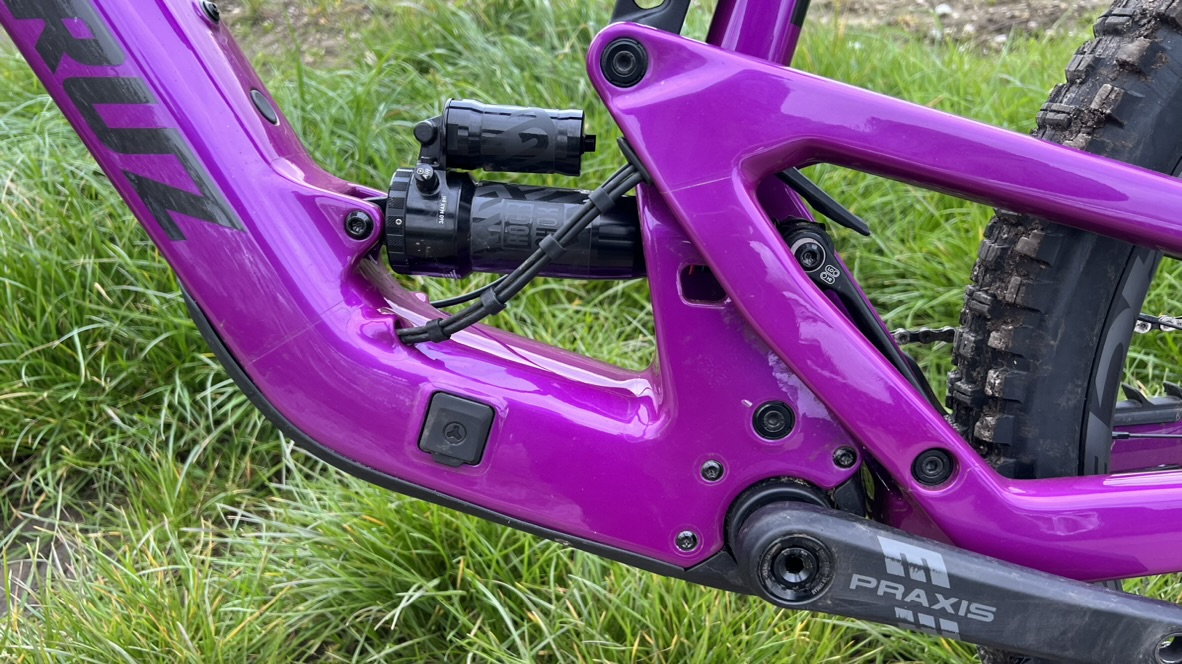
Design
Some brands go to great lengths configuring their e-MTBs to massage weight distribution, or fit their suspension around the extra bulk of the battery. In contrast Santa Cruz seems to have just upped the volume of the already over-sized ‘Glovebox’ internal storage downtube and stuck the 430Wh battery straight in. The Ride 60 motor then sits below, putting the cranks in the same position as they would be on the Bronson.
Like most other Santa Cruz bikes, the Heckler SL is also available in either the cheaper ‘C’ carbon fiber layup I tested or premium CC if you want to save just over one percent from the overall package weight. The VPP suspension also sits in basically the same place as the rest of the Santa Cruz pedal range – shock pushing through the bottom of the straddle seat tube, lower linkage dropping down the back of the motor, top linkage swinging out of the armpit between top tube and seat tube. That means Santa Cruz uses the latest kinematic version of its well-proven twin linkage setup to deliver 150mm of rear wheel travel, using the same lifetime warrantied collet axle pivot and user-serviceable bearing system as it's used for decades. The charger plug then sits on the topside under a spring-loaded flap, just below the bottle cage mount in the surprisingly roomy mainframe space. The company matched the paddle rubber chain rattle stopper on the chainstay and rubber belly armor with a soft rubberized TPU cover on the exposed offside part of the motor.
I’m sure it’s actually a lot more complicated than that and involved some serious head scratching at times. But to be honest it’s a massive compliment that Santa Cruz has made it look so easy. To be clear it hasn’t stopped it looking like an E-bike though. The oversized downtube and swollen belly are a giveaway alongside Scott’s Lumen, Specialized’s Levo SL, Rotwild’s RX2.75, Trek’s Fuel eXE and other clandestine chassis options.
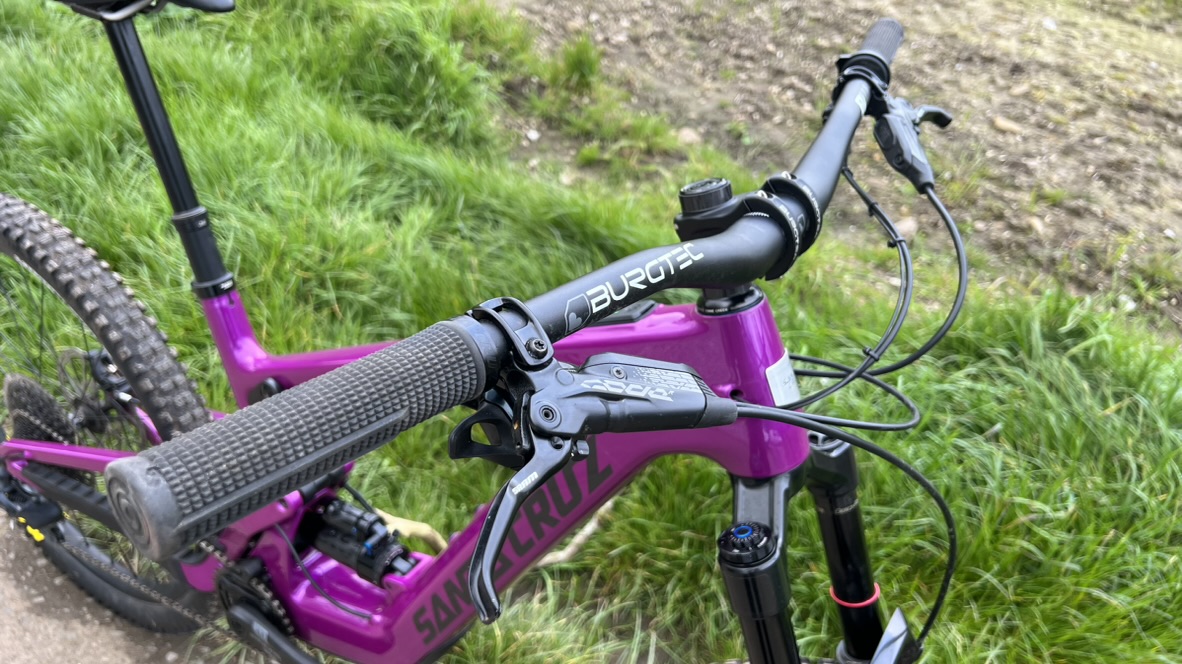
Geometry
The Heckler SL shape is a slight update on the proven Santa Cruz Bronson numbers. Head tube angle is half a degree slacker at 64.3 or 64 degrees depending on which way you set the shock mount ‘flip-chip’ on the lower linkage. Reach is 478mm (on a large) and the seat tube angle is 0.7 degrees steeper at 77.2 or 77.5 degrees. The motor does force a slight compromise in that tire clearance behind the motor means small to large sizes use the same 444mm chainstays. XL bikes get a 446mm back end though with 450mm hindquarters on XXL. The seat tube is also 30mm longer at 460mm on the large I tested. While it does get that flip-chip to alter geometry and shock behavior slightly, Santa Cruz is very specific about you keeping it MX / mullet style with a 27.5in rear wheel rather than using that alteration to open up a 29er option.
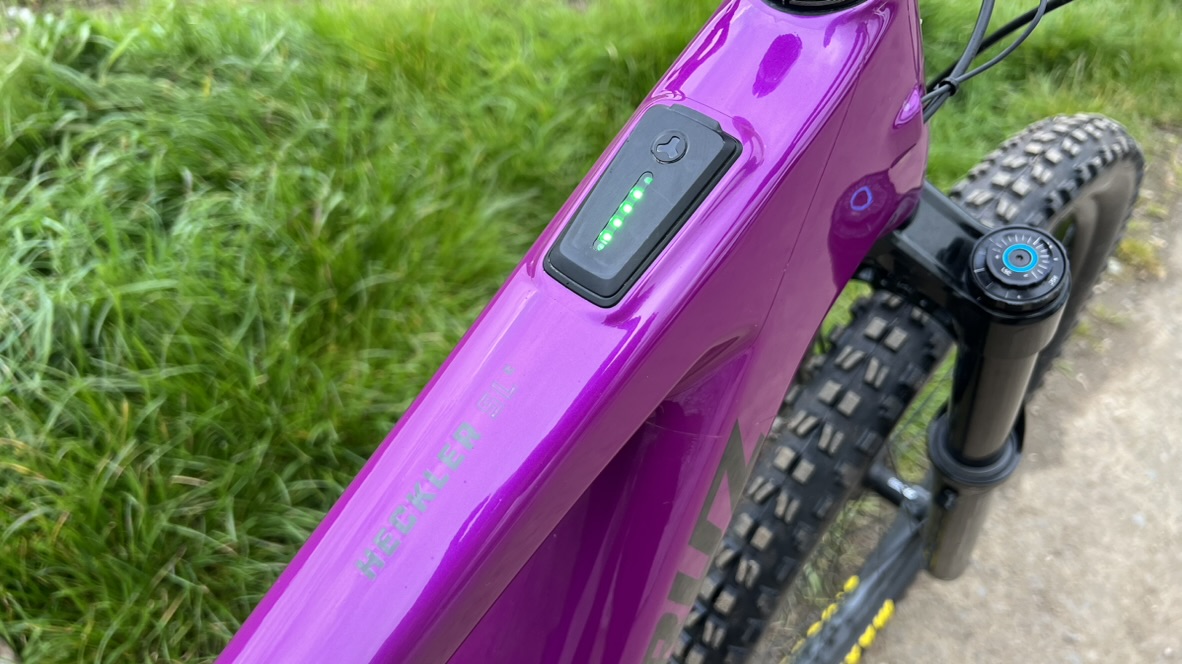
Too Porsche to push
Fazua isn’t just part of the bigger Pon family; since 2022 it's also been part of Porsche and the Ride 60 motor and battery system is its latest e–MTB power pack. It’s at the upper end of the mid-power motor charts with 60Nm of torque and up to 450W of power for 30 seconds in ‘Boost' mode. Otherwise, you’re picking from Rocket, River and Breeze presets which are custom configurable via the Fazua smartphone app. While you can get a Fazua head unit, Santa Cruz has chosen the basic five LED battery and mode indicator embedded in the top tube. The pop-up USB-C port for recharging lights or GPS units from the main battery is a nice touch though. The ring controller just inboard of the left-hand grip is really intuitive and easy to use, but the loose plastic design definitely lacks the robust, quality feel of the rest of the bike.
The system is only rated to IPX54 in terms of dust and waterproofing. This officially equates to just occasional water splashes and compares badly to IPX 6 or 7 ratings on most other motor systems. That’s potentially the reason for what seems a high rate of reliability issues and failures on early Ride 60 motors. To its credit, everyone I know who’s had an issue with a Heckler SL has had it sorted out very quickly and second-generation systems seem to be holding up far better. There’s still no sign of the promised auxiliary battery pack either although some shops have been listing it for over a year.

Components and build
The S build I tested is the second tier Heckler SL, but I think it represents a real sweet spot in terms of spec. The 160mm travel Lyrik fork is ‘only’ a Select + model but that still gives you external low- and high-speed compression adjusters on the fork. It also dodges the spike-causing, mis-sized bushing bullet that a lot of current generation Ultimate forks have suffered from. The Super Deluxe Select + rear shock is an excellent piece too and while the low speed compression damping adjustment is simplified to just a lockout lever the preset open tune felt great.
Cabled SRAM GX gearing means the only battery you have to worry about is the big one. Santa Cruz has wisely specced the chain-protecting, single-shift trigger that most folk seem to have forgotten about. Race Face AR30 rims are tough considering they’re relatively light and the DT Swiss 350 hubs are super reliable. Burgtec is rapidly becoming the default spec for stems on boutique brands and the Macclesfield lads also supply the alloy Ride Wide bars and the rear axle for the Heckler SL. The grips are Santa Cruz’s own lock-ons, with an excellent OneUp dropper post managing ride height of the WTB saddle.
The only components that everyone who rode the bike identified as a sooner rather than later upgrade were the SRAM Code brakes. Even with 200mm rotors they were hard-pressed to stop the late braking lunacy the SL encouraged every ride. While I didn’t suffer any flats with the Exo front and Exo + rear carcass Maxxis tires even on rocky descents, more reckless/heavier riders will probably want DoubleDown protection on the rear at least. MaxxGrip compound on the front DHF means a slower roll and a shorter range too, but you soon realize the Heckler SL is designed for wild rides, long ones.
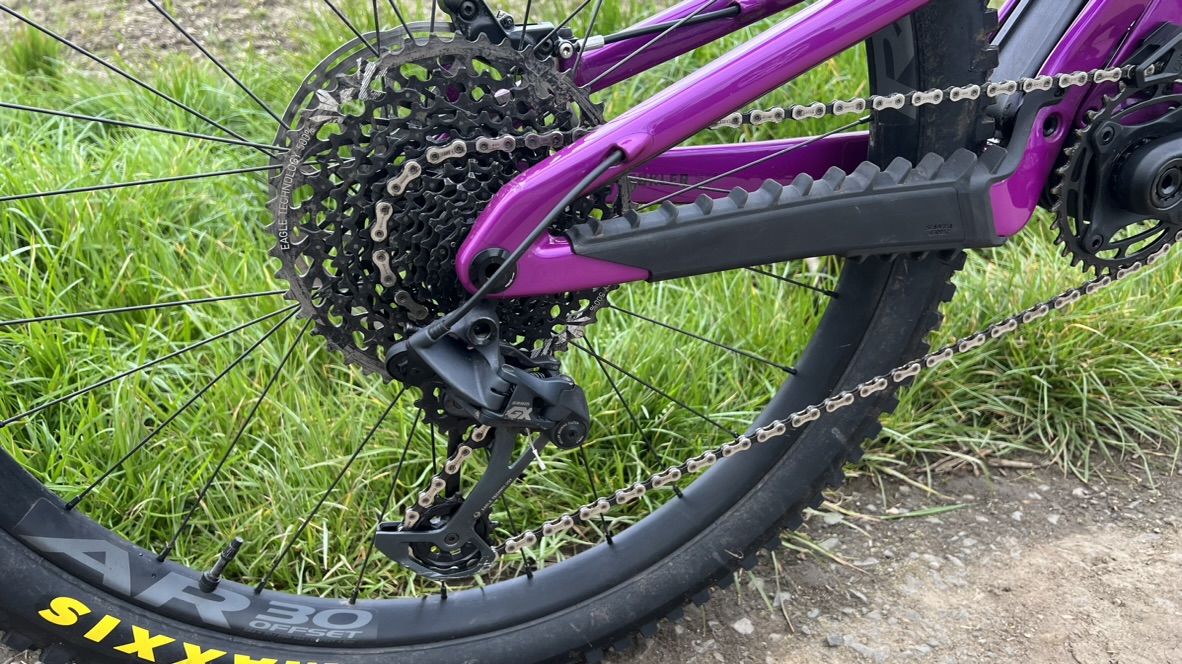
Ride, handling and performance
As a reviewer I always look for a way to root the trail performance of a bike into physical attributes. In e-MTBs that tends to revolve around particularly low battery placement, cleverly revolved motors or some special sauce they’ve smacked out of the kinematic ketchup bottle. It’s professionally troubling then that there’s no obvious, outstanding reason that the Heckler SL should ride as well as it does. Again I apologise if this sounds like I’m undermining the diligence of the design team, but it’s exactly that same ‘don’t overthink it’ vibe that makes the Heckler SL such an addictively amusing bike to ride.
Set up the suspension using the online chart, check sag through the window in the seat tube flank and you’re pretty much good to go. Like all e-MTBs, the extra mass of the battery and motor increases the sensitivity of the suspension as it has less chance of moving the bike and has to get busier itself. That means impressive traction on technical, toothy trails whether you’re going up, down or edging along something sketchy. That doesn’t mean it’s a melt when pedaling though, as the anti-squat and shock progression keep you nicely settled as you pedal. As a result, you probably won’t ever need to use the lockout on the rear shock unless you’re determined to ‘StairMaster’ road climbs out of the saddle. If you spin the Heckler SL up to speed there’s basically zero motor resistance beyond cut-out speed. The sticky front tire and smaller rear wheel do noticeably reduce rolling speed and efficiency though so you are going to have to work hard to get it to that point.
While it’s a little reluctant to gallop along the flat, it’s begging to engage anarchy encouragement mode as soon as there’s a chance to get silly. The transfer from upper to mid stroke is easy enough to carry speed well through mixed mayhem. It never over-travels though and there’s always a firm mid-stroke footing to push or pump from. While I’ve found some of the latest-gen, shorter travel VPP bikes like the Tallboy and 5010 to slap and catch on squarer high-speed hits, the Heckler rarely blinks on the bigger stuff. Even when I properly slam-dunked the Heckler, the hydraulic bottom-out built into the shock meant landings or cases were way more calm and controlled than I deserved. That’s not to say there weren't occasional moments – mainly on successive small to mid-size hits – where the smaller rear wheel felt more chattery and lost speed faster than a 29er would. However, the longer chainstay than most mullet bikes means they certainly were less frequent than I expected.
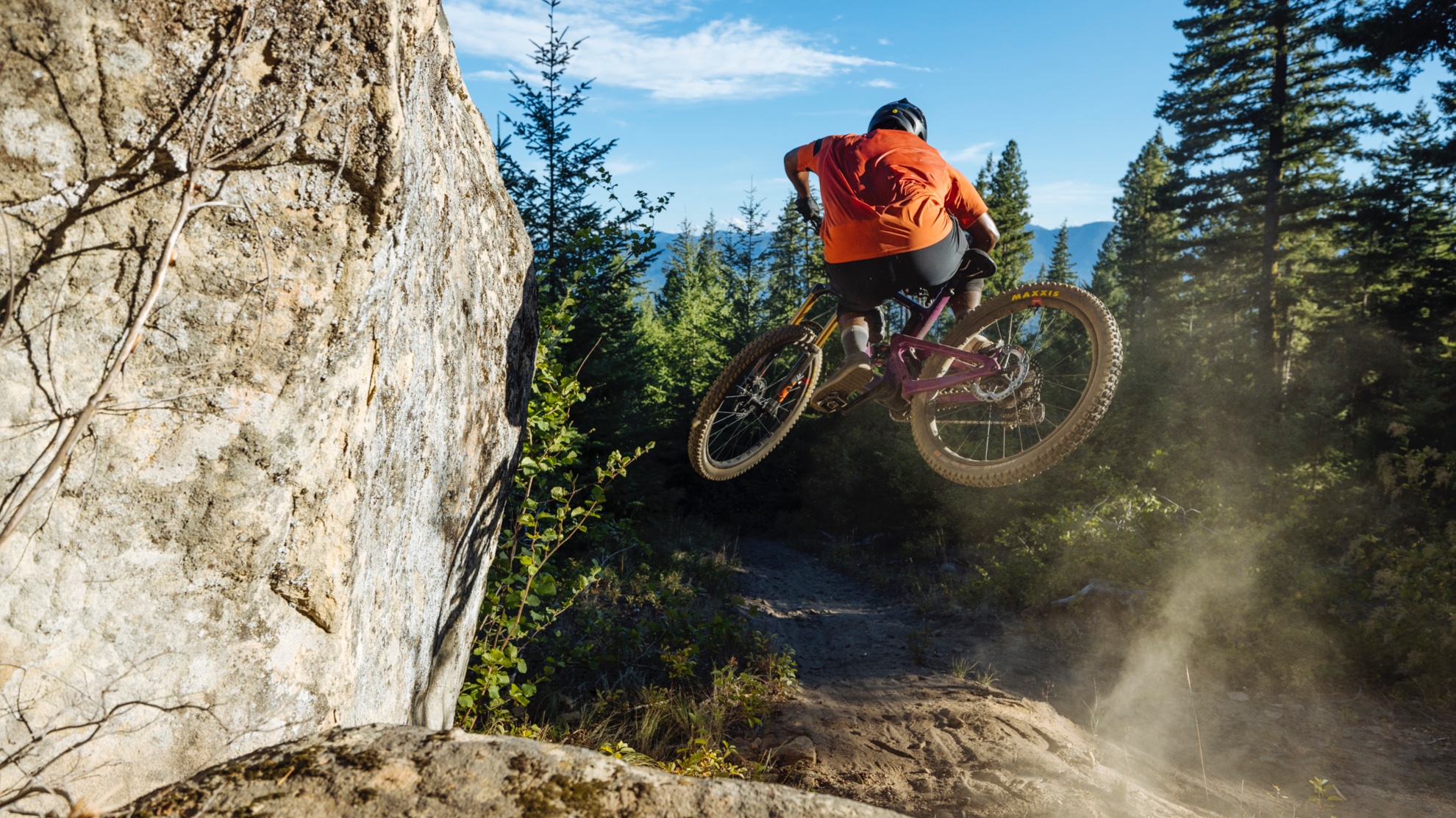
It’s a trade-off that definitely suits the overall player not slayer character too. As you’d expect that’s most obvious in turns. The smaller rear wheel and different effective BB heights front to rear amplify the already aggressive turn in of the big Burgtec bars, tipping the Heckler in harder and tighter than a twin 29er. While the battery isn’t particularly low in the frame, it’s not large or heavy either so there’s none of the understeer or tendency to stand up in turns that can make full fat bikes such a handful. As I’ve mentioned previously, the initial flutter grip firms up nicely as you push into the mid stroke, so you can sit the bike securely into turns or berms. Rail it hard and the rear wheel will sit on that same mid-stroke support as it slides from scrubbing in tighter to sliding out wider, making you feel a proper schralping hero. Excellent frame stiffness and precise and consistent damper action keep you well informed of what the tires are doing too so it’s a really rewarding bike to rally. Sorry, no. “Really rewarding” is way too tame and lame to describe riding the Heckler SL. Even for an intermediate XC-biased rider like myself, it’s a side-hustling, hip-hunting, roost-kicking, extra-curricular joyrider that’ll have your head swiveling for every potential chance to get daft.
Having the power to press replay on this riot happy character multiple times made it the perfect companion for seeking out the tops of those feral descents you wouldn’t waste precious pedaling time on with a normal bike. It’s agile and lively enough to twitch and tweak down stuff that would be a real handful on a full-fat e-bike too. As a result I spent most of my test time lapping a local crag-infested wood, piecing together all sorts of new options from old '90s DH courses and barely visible deer runs, as well as polishing up my skills on the stuff I knew already. Or to put it another way, it’s that riding mate who not only takes you to the fun stuff you didn’t know about, but always makes sure you have a really good time. Because travel is kept to 150mm at the rear, the MX format doesn’t hide speed like a twin 29er can, and as the back end isn’t super short it’s not a bike that’ll trick you into dangerous situations. It’ll give you plenty of confidence to play with your usual limits though and then look after you if/when you do step over the line.
The Fazua motor is really easy to ride, picking up assistance progressively to match your own input but without needing crazy-fast pedal speeds to get high levels of support in the standard modes. Being able to push the ring switch forward for a few seconds and surge up crux moves on climbs or hit ‘carry through’ speed for a tech section is super useful. I did find that the default River mode was sometimes too aggressive when trying to balance traction and nose lift, while Breeze mode was on the weak side, but that’s easy to adjust via the Fazua app. I had no reliability issues with my bike either, although by the end of the test it was making an increasingly intrusive growling noise that SL owners have told me is a bad omen.
The 430Wh battery was generally enough to handle as much hardcore riding as the rest of me could (two to three hours of cragging is a fair workout). However, not knowing how long it’ll be before auxiliary batteries are available for the Fazua system is irritating when systems like Bosch and Brose/Levo have it sorted.
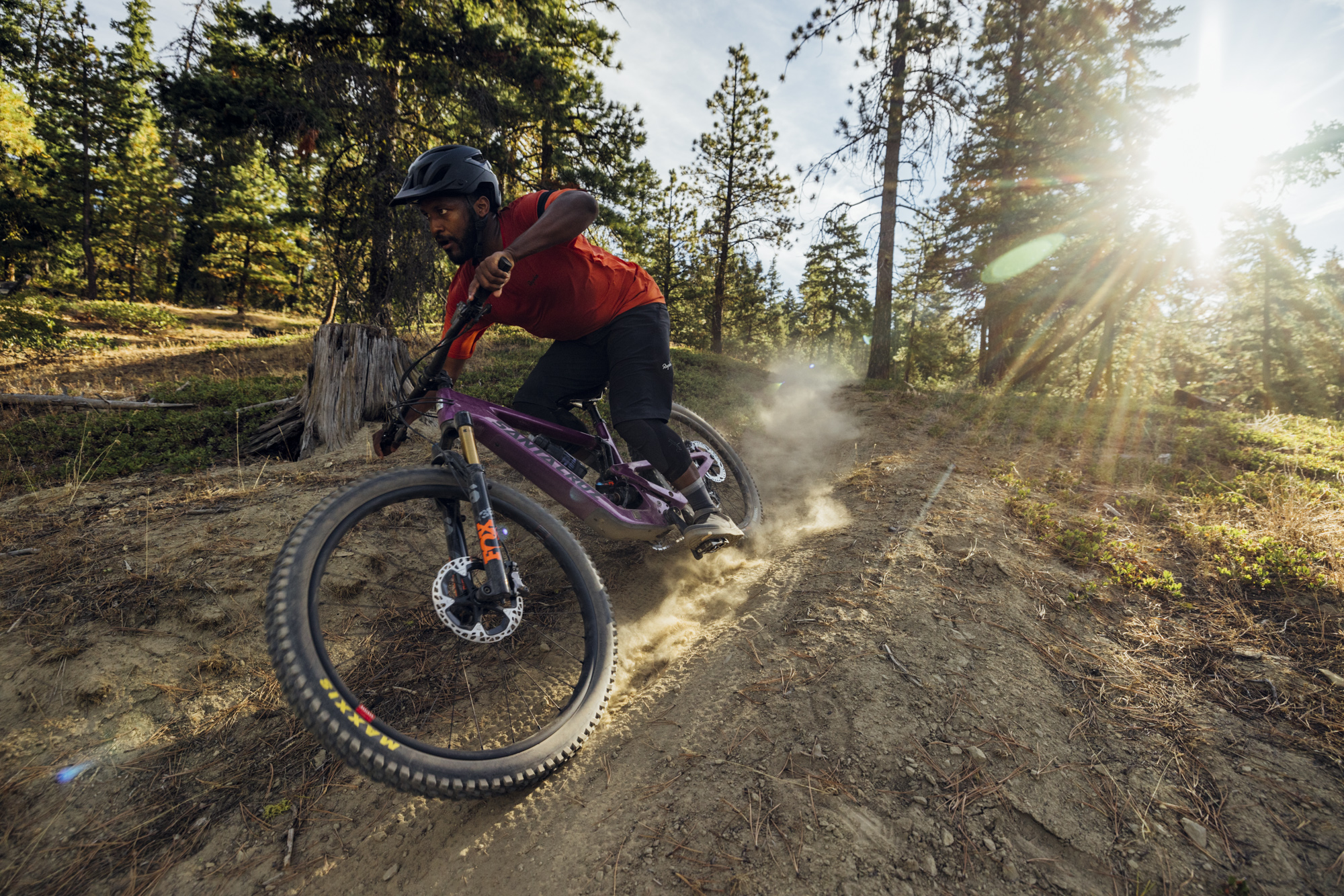
Verdict
It’s a massive credit to Santa Cruz that it has made excellence seem so easy in terms of the handling, chassis dynamics and suspension of the Heckler SL. That easy nature informs the whole riding experience too. So while it’s hard to put a finger on exactly why, it’s just an absolute joy to play with on the trail, and the more technical that trail the better. The S level kit and Carbon C frame are a real sweet spot in terms of performance for price.
The Fazua Ride 60 is a great match for the bike in terms of power to weight, natural feel and a really intuitive controller. The frail feel of that controller, crude rider interface, worrying level of weatherproofing, reliability of early motors and current lack of an auxiliary motor make it the weakest part of the package though.
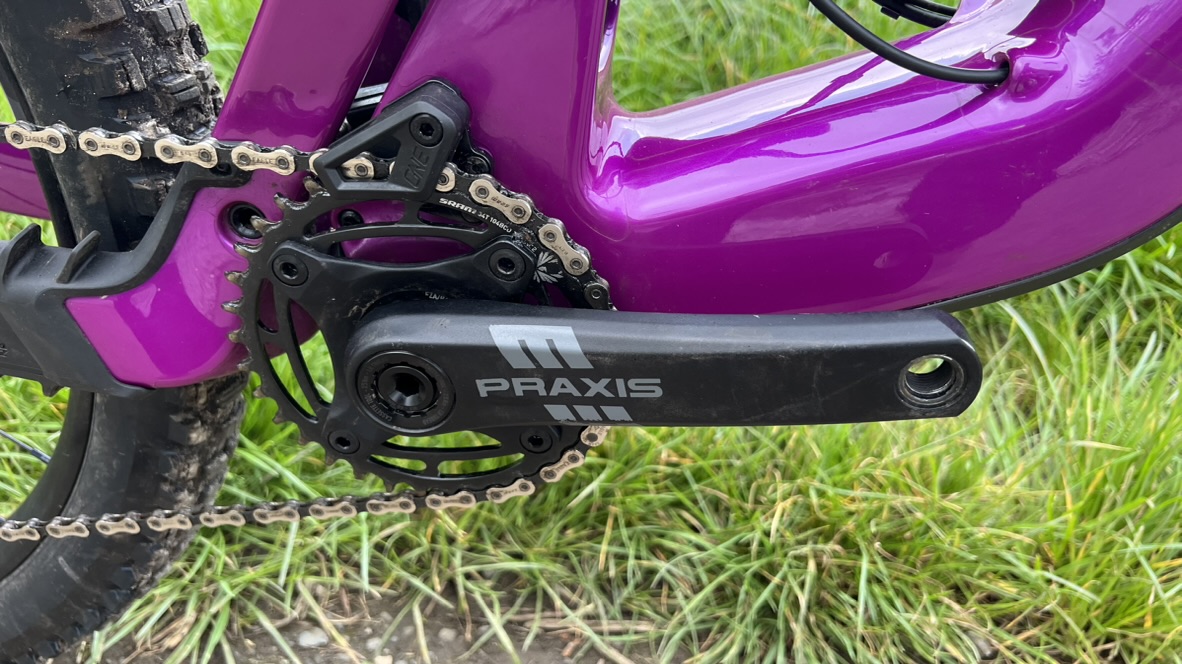
Test conditions
Surface: Rocks (from loose rubble to serious boulders and craggy drops), roots, loam, mud, trail center kitty litter
Trails: Blue, red and black trail center trails, off-piste moorland singletrack, natural enduro and old-skool DH runs
Weather: Mixed spring weather but definitely on the damp and soggy side
Tech spec: Santa Cruz Heckler SL S
- Discipline: e-MTB
- Price: $8,699 / £7,599
- Head angle: 64 / 64.3 degrees
- Frame material: Santa Cruz ‘C’ carbon fiber monocoque
- Fork: RockShox Lyrik Select+
- Shock: Rockshox Super Deluxe Ultimate 210x55mm 145mm travel
- Size: S, M, L (tested), XL, XXL
- Weight: 19.4kg (L actual)
- Wheel size: 29in
- Motor: Fazua Ride 60
- Battery: Fazua 430Wh
- Chainset: Praxis eTor AL with SRAM X-Sync2 32-tooth chainring
- Components: SRAM X01 Eagle AXS 10-50T 12-speed wireless gearing and X01 single click shifter. SRAM X1 Eagle 32T chainset
- Brakes: SRAM Code R brakes with 200mm rotors
- Tires: Maxxis Minion DHR II, 3C MaxxGrip, EXO, TR 29 x 2.5in front and Maxxis Minion DHR II, 3C Maxx-Terra, EXO, TR 27.5 x 2.4in rear
- Wheels: RaceFace AR30 rims with DT Swiss 370 hubs
- Bar: Burgtec Ride Wide alloy 800mm
- Stem: Burgtec Enduro MK3, 42mm
- Seatpost: OneUp V2, 31.6mm dropper
- Saddle: WTB Silverado Medium







